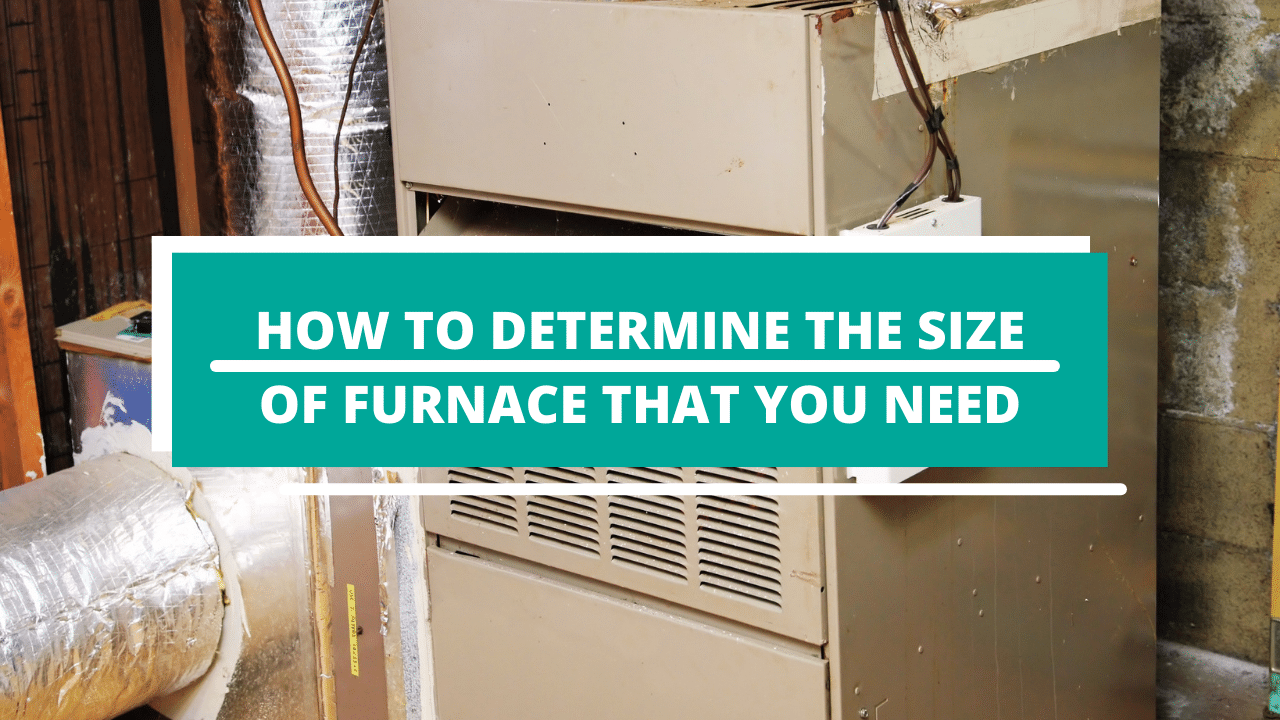Cold weather is something many people enjoy, especially when people have had enough of the summer heat. But of course, there is always a limit as to how people can enjoy cold temperatures. When temperatures go down to such a rate your tap water freezes within mere seconds, it is time to warm yourself up.
Furnaces are the most common method of heating a home in the United States, more than conventional heaters included in your typical HVAC system. (Related: Are High-efficiency Furnaces Worth The Money?) The bad news is your heating needs are symmetrical to the size of the furnace your household needs. So, how can you choose and determine what furnace size you need? Continue reading down below and learn how!
Why Does Furnace Size Matter?
You might have heard someone say, “the bigger, the better,” and for furnaces, this statement is very true. Furnaces have sizes and capacities, and these capacities are your map and manual to know whether a particular furnace size is the best for your home.
Furnace size matters for a reason: if you use a small furnace for a massive house, you only get one warm spot in your house while other areas are freezing cold; if you use a big furnace for a small house, you may be consuming a lot of energy that will most likely be reflected in your monthly energy bills. If you also have the wrong furnace size for your home, your furnace may work harder than usual, or you might need to cycle the furnace on and off constantly which will most likely cause your furnace to have a short lifespan.

How to Determine the Best Furnace Size?
Since you already know why furnace size matters, we will now move on as to how you can determine the best furnace size for the size of your home.
Step 1: Determine your Home’s Square Footage first
Before you choose your furnace size, you need to know first how big and how wide your home’s floor area is. Bigger homes typically require bigger furnace capacity, so you need to accurately measure. You may do this measurement using square foot or square meter, you decide.
After you do this, take note of your home’s overall floor area as this will be your guide to choose the furnace that is right for the size of your home. Here is a measurement guide for homes with various shapes:
A 1,200 square-foot house typically needs a furnace with 36,000 - 72,000 BTUs capacity, while a 1,800 square-foot one needs 54,000 to 108,000 BTUs. Do take note that larger homes need more BTUs or British Thermal Units, a measurement system that measures the amount of heat an energy source emits (in our case, the furnace).
Step 2: Find out what Climate Zone your Home Belongs to
Just like with air conditioners, the climate your home is in is a factor that can affect your furnace’s heating capacity. It can also help you determine how many BTUs do you really need for your home. Generally, houses that live near the equator need more air conditioning systems than heating systems such as furnaces.
So if you are farther away from the equator, you might need more BTUs to warm your home. There are also geographic factors that can affect your BTU requirements such as elevation, ocean currents, and infrastructure (more buildings mean warmer temperatures).
There are five climate zones in the United States. Given that the US is a very massive country, different states enjoy varying climates. Northern states typically enjoy colder temperatures; southern ones enjoy warmer temperatures, and the eastern and western ones enjoy humid temperatures and can be visited by hurricanes either from the Pacific or Atlantic. Here are the US’ five climate zones:
Zones (from Warmest to Coldest)
Each climate zone has their own recommended BTU ranges. If your home is properly insulated, you can choose a furnace with a lower BTU capacity, however, if your home does not have a proper insulation system, you can go ahead and choose a higher BTU capacity.
One simple hack to help you decide is to get your floor area square footage and multiply it by the lowest number of BTU requirements in your respective climate zone to see the recommended BTU range for your home (ex. 1,800 sq. ft. x 50 (Zone 5), equals 90,000. The result is your BTU recommended range).

Conclusion
There are other factors to consider when choosing the right furnace size for your home. You must consider indoor factors too such as your windows, ceiling height, wall thickness, the color of your room, the number of occupants, and even the number of floors. All in all, choosing the right furnace size ultimately boils down to the size of your home, and of course, the degree of warmness you would like to have in your home.

